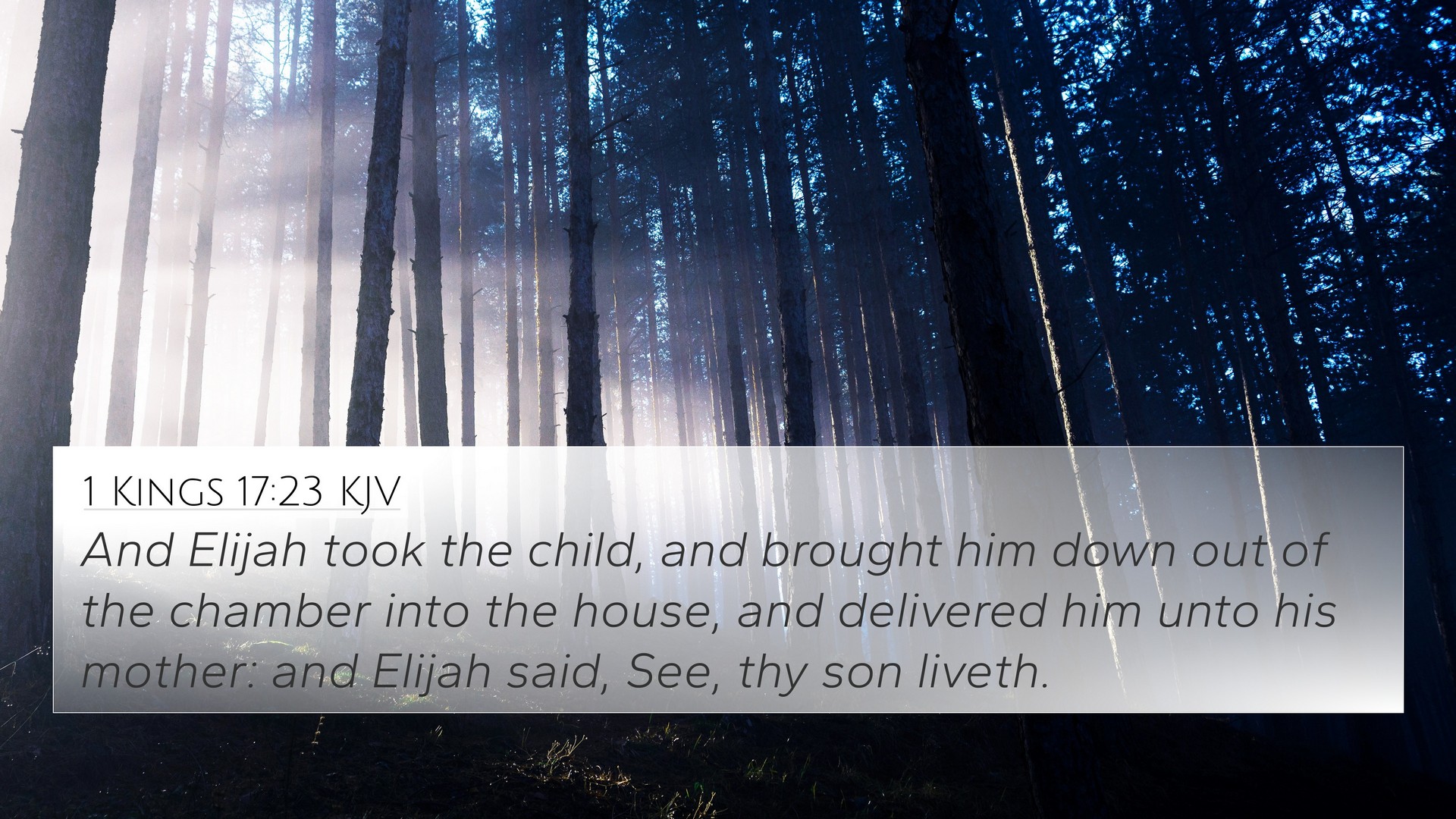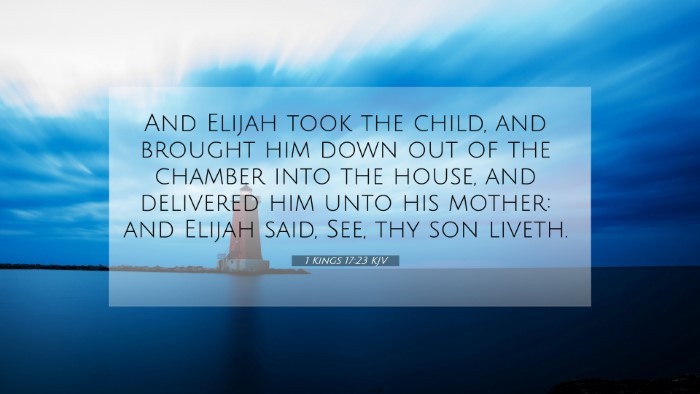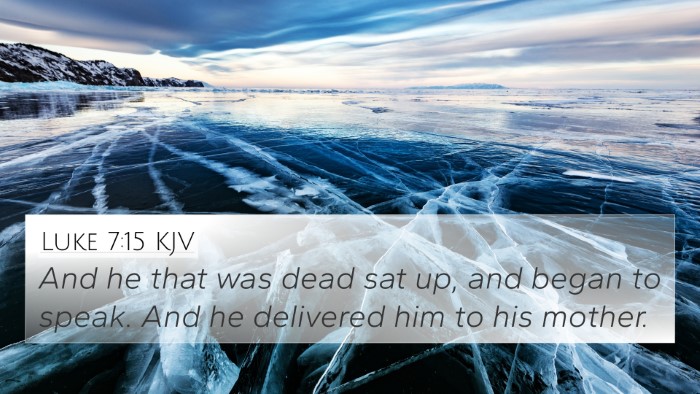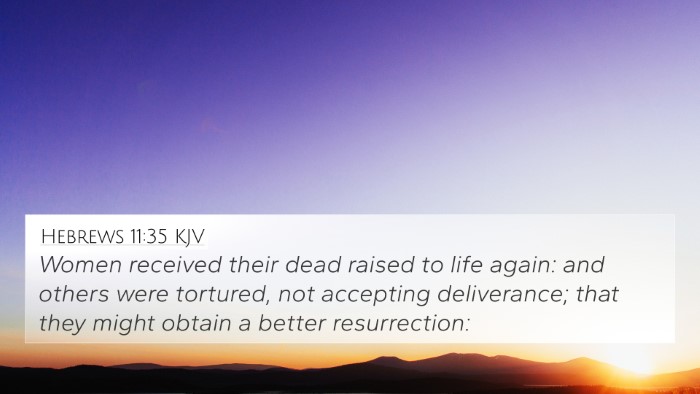1 Kings 17:23 reads: "And Elijah took the child, and brought him down out of the chamber into the house, and delivered him unto his mother: and Elijah said, See, thy son liveth."
This verse captures a pivotal moment in the life of the prophet Elijah, demonstrating both the power of God through him and the profound relationship between physical and spiritual revival.
Commentary Insights
Matthew Henry emphasizes the miraculous nature of Elijah's actions and the immediate response of the grieving mother. He notes the profound transformation from despair to joy, highlighting the divine intervention in personal tragedies.
Albert Barnes points out the significance of Elijah's role as a prophet and mediator. He stresses that this act symbolizes hope and faith, reinforcing God's promise to provide for His people even in their darkest moments.
Adam Clarke provides a more detailed reflection on the act of resurrection presented in this verse, associating it with New Testament themes of life and resurrection. He connects Elijah’s miracle to the eventual resurrection of Christ, foreshadowing the hope believers have in eternal life.
Thematic Connections and Biblical Cross-References
Understanding the connections between scripture enhances our grasp of God's overarching narrative. 1 Kings 17:23 can be related to several other verses that elaborate on similar themes:
- Luke 7:11-15: Jesus raises the widow's son at Nain, showcasing God's power over death.
- John 11:43-44: Jesus raises Lazarus, illustrating His authority as the resurrection and the life.
- 2 Kings 4:34-35: Elisha raises the Shunammite's son, echoing Elijah's earlier miracle.
- Hebrews 11:35: Refers to women receiving their dead raised to life again, tying back to the narrative of divine restoration.
- 1 Samuel 2:6: “The Lord kills and makes alive; He brings down to the grave and brings up,” echoing the theme of resurrection.
- Romans 8:11: Connects the Spirit that raised Christ from the dead to the hope all believers have in resurrection.
- Revelation 21:4: Envisions a future without death, tying into the restoration themes presented in Elijah's story.
Understanding Through Cross-Referencing
Engaging in a comparative study allows for a deeper appreciation of these events and their implications for faith. 1 Kings 17:23 serves as a conduit for understanding:
- How God interacts with humanity through miracles.
- The role of prophets as God's chosen instruments in the lives of believers.
- The dynamic of faith in experiencing God’s miraculous power.
- Connections between resurrection narratives in the Old and New Testaments, providing coherence in God’s plan for salvation.
Conclusion
The verse 1 Kings 17:23 exemplifies the profound relationship between divine intervention and human experience. The resurrection of the widow's son not only affirms Elijah’s prophetic authority but also prefigures the greater miracle of resurrection found in Jesus Christ. Engaging with cross-references allows for a thematic study that enhances our understanding of God's Word.
For those studying the Bible, exploring tools for cross-referencing can deepen your insights into similar themes and enrich your spiritual understanding. Utilize a Bible concordance or create a personal Bible cross-reference guide to uncover the interconnectedness of Scripture and the timeless truths within.






